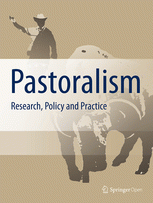Dryland livestock production systems are changing in many parts of the world as a result of growing human populations and associated pressure on water and land. Based on a combination of social and natural science methods we studied a 30-year transformation process from pastoralism to a livestock-based agro-pastoral system in northwestern Kenya with the overall aim to increase the understanding of the ongoing transition towards intensified agro-pastoralist production systems in dryland East Africa. Key to this transformation was the use of enclosures for land rehabilitation fodder production and land and livestock management. Enclosures have more soil carbon and a higher vegetation cover than adjacent areas with open grazing. The level of adoption of enclosures as a management tool has been very high and their use has enabled agricultural diversification e.g. increased crop agriculture poultry production and the inclusion of improved livestock. Following the use of enclosures livelihoods have become less dependent on livestock migration are increasingly directed towards agribusinesses and present new opportunities and constraints for women. These livelihood changes are closely associated with and depend on an ongoing privatization of land under different tenure regimes. The results indicate that the observed transformation provides opportunities for a pathway towards a sustainable livestock-based agro-pastoral system that could be valid in many dryland areas in East Africa. However we also show that emergent risks of conflicts and inequalities in relation to land triggered by the weakening of collective property rights pose a threat to the sustainability of this pathway.
DOI:
http://dx.doi.org/10.1186/s13570-015-0044-7
Altmetric score:
Dimensions Citation Count:























